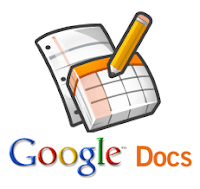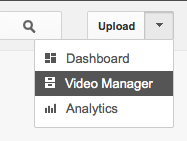Instructional Strategies & Google Docs
This week at school we've been preparing for an upcoming
professional development day taking place in January. This day will focus on the 9 High Yield Instructional Strategies. We will have Jane E. Pollock, author of "Improving Student Learning One Principal at a Time", visiting our school. She will follow-through on her visit from last year and the work done by all teams and how
they've incorporated the GANAG schema and the instructional strategies to their
lesson plans.
 As I was preparing for my team meeting, I thought, "How
can Google Docs and Apps support this initiative?" This is what I brainstormed:
As I was preparing for my team meeting, I thought, "How
can Google Docs and Apps support this initiative?" This is what I brainstormed:
1. Identifying Similarities and Differences
- Use the Spreadsheet chart capabilities to prepare comparisons.
- Use the Drawing doc to create a mental map.
- Use a Form to collect data that can later be graphed.
2. Summarizing and Note Taking
- Student takes notes in a Document created by him or the teacher shares a pre-formatted Document with students.
3. Reinforcing Effort and Providing Recognition
- Students can create a Presentation that can be shared with classmates.
- Students can use a Form to keep a log or journal.
- Students can create a video, upload to YouTube or to Drive and share with the world.
- Create quizzes with Forms.
- Simulate a quiz or trivia game with Presentations.
4. Homework and Practice
- Use Presentations to create digital flashcards.
- Provide templates created with Docs.
5. Nonlinguistic Representations
- Use the Research tool to find images to add to any Doc.
- Create a Presentation with images only.
- Embed Youtube videos to your Presentations.
6. Cooperative Learning
- Students can work collaboratively through any of the Google docs.
- Create a trivia game with Presentations that students can play together as a group.
7. Setting Objectives and Providing Feedback
- Use a table in a Document to prepare a KWL chart.
- Insert an objective or goal slide in your lesson Presentation.
- Create a quick survey with a Form as a pre-assessment.
- Teacher and peers can make Comments to a Document.
- Use Calendar to set goals and assign Tasks.
- Have students keep an e-portfolio with Sites.
8. Generating and Testing Hypotheses
- Write down hypotheses in a Document.
- Use the Search tool to find information.
- Use a Spreadsheet or Form to collect data.
9. Cues, Questions, and Advance Organizers
- Create a Document with useful links and share with students.
- Use Drawing to create a graphic organizer.
- Use Tables in Documents to organize data.
I'm sure there are more ideas, and certainly that include
other technologies other than Google Docs. If you have any more Google ideas, please make a comment. I'd
love to include them in this list!
Cheers!



Comments
Post a Comment